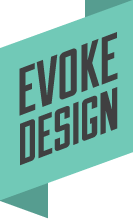Prepping content while optimizing for a CMS
Trying to your page content optimized for the web is difficult at the best of times, especially if you are dealing with a Content Management System ‘CMS’ which is not particularly user friendly.
There are so many options and resources of advice at our finger tips, with different professionals and companies telling us what we should and should not be doing, and what is best for us without evening really getting to know us, our business or the systems we are using.
Well in this article we are going to discuss SEO, but not the best practices of how you should write your keywords, nor are we going to cover what the best way is to write your content in to be most effective with your description, as all that information would be purely speculative, impossible to tell without knowing your business, and also highly down to personal preference. Yes there are best practices but they to are only effective from personal experience, who is to say they work for everyone?
No, this article is going to cover a few simple stages in getting page content that you have already written ‘ready’ to be added into a content management system and to try to make optimizing it a much easier and hassle free process.
Step 1 – Prep Prep Prep.
So to start with, we need to prepare our content. By this I mean the content needs to be fully written and in a state that you are happy with it and are not going to be changing or editing anything at this stage at least.
This should be done outside of your CMS, especially if you are struggling to use your CMS. There is nothing worse than writing straight into a CMS WYSIWYG editor, to then have to strip everything back, mess around with content and start creating keywords, descriptions and clever titles. Do this before hand in an environment you are comfortable in.
Now, we have our content and we assume we have optimized it the way we want to. Bear in mind that you optimize content as you write, I already know what I want this article to be optimized for, and therefore as I type I am sub consciously gearing my copy towards my chosen direction of SEO.
Step 2 – The Description.
So what we do next is we take our copy and create a description from it. This is a block of keyword rich copy that best describes your whole article in one paragraph (maximum of 160 characters)
This needs to make sense also, as it is used by search engines, but it also needs to be very keyword heavy. This is the time to create this content before it is added into the CMS.
Step 3 – Keywords.
So, as mentioned above, we are not going to go into what are the best practices for keyword creation, but what I would say is you keywords need to relate to your page copy, throwing a load of generic site wide keywords on a page will not do it any good. That is why this three step process is quite good as it windles down your main article to your description to your keywords, keeping everything linked in one document so you have a full overview of all your copy.
So all I would say here is your keyword list needs to be generated from your copy and description so it remains related.
Step 4 – Images and supporting media.
Once we have our copy, description and keywords, we need to gather up any other media we intend to use on the page, whether it be images or links to videos. This is important as if you are mid adding copy to your page and realize you want to add an image, you have to save your copy (If the CMS your using allows you to save as drafts) then go and find an image, upload, go back to your previously half crated content, find your image…etc etc you can see where I am going with this.
So basically in a nut shell, you need to gather all elements of a page or article together before hand as it allows you to keep in a flow while writing, it saves time in the long run and it stops you having to dart all over gathering content once your are in your CMS.
The final step now becomes the fun part.
All you do is get into your CMS environment, and start copying your content in. Be careful copying from Microsoft Word or certain text editors as they can bring in nasty code, use the safe copy tool in the WYSIWYG, or paste from a plain text editor.
And that is it, simply preparing all your content and media before hand can make for creating optimized content through your CMS a much quicker, more effective and simpler experience.

Leave a Reply